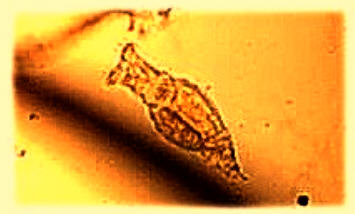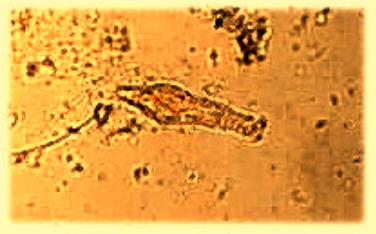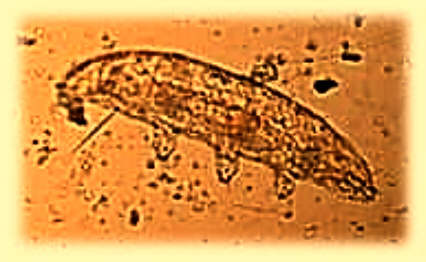Those rectangular blocks of concrete that we are so familiar with are the least of places enticing us to search for microscopic life. We probably think that in any case concrete is exactly the material that has replaced nature in our cities or metroplexes as they are called now.
The reality is very different and for a very simple reason that can be stated in the phrase “life is resilient”. So no matter how much we clean and chlorinate our concrete buildings and sidewalks to make them look “clean and white”, life comes back to them if they are left untouched even for a short sometime. In fact nature could, in the geologic time scale of a heartbeat, reclaim and grow over everything we have ever built.
These were my thoughts as I took some samples of a very dark moss-like growth from a block of concrete in my backyard. This growth is very well affixed to the concrete and must be scraped out to collect it. It seems to grow in the more humid parts of the blocks were the sun shines for only shorts periods of time. I placed this material in a Syracuse dish, added some rainwater collected earlier and left it soaking for 24 hours at normal room temperature that at this time here lies at about 85° Fahrenheit. After this period, parts of the material was taken out and gently squeezed over a large slide with a glass rod in order to get a sample of the microfauna in this moss-like growth.
Some of this sample was also teased with a pair of needles and placed in another slide. The growth is so thick that it is not possible to pass any light through it so it must be teased apart. At 100x in my microscope the image was that of a menagerie. There were nematodes, rotifers, tardigrades and a large number of protozoa in the slide containing the squeezed sample as well as the slide containing the teased material. In addition the dark moss-like material turned out to be associated to a green algae so compacted as to look like a dark moss Among the rotifers I found representatives of three different genera. The genus Adineta was the most abundant rotifer found followed by the genus Habrotrocha and Philodina (figures 1 and 2).
(Please note that the pictures
were taken with a low cost digital camera
but suffice to show the general
forms of the organisms found.)

Figure 1. Bdelloid Rotifer (Philodina)

Figure 2. Bdelloid Rotifer (Habrotrocha?).
All of these are bdelloid rotifers that are capable of resisting dehydration. Several water bears or tardigrades were also present (see figure 3).

Figure 3. Tardigrade From the
Sample.
The tardigrades were the shortlived creatures in this sample. They disappeared after a couple of days while the rotifer population continued to grow with Adineta being the most abundant rotifer. It seems that tardigrades require specific conditions for their maintenance in a culture. Protozoans included colpoda, stylonychia and amebas (some of the Arcella genus). There were also a few vorticella. Small nematodes were also present but few in numbers. This sample remained quite active, except for the tardigrades, until it was properly returned to its place of origin and replaced on top of the concrete block. It is interesting to note that compared to samples taken from real moss, this growth is much richer in the diversity of the microfauna that it contains. I was not able to identify the algae associated to this growth so any help on this matter will be greatly appreciated.
The above observations clearly indicate that there is a lot of microscopy to be done in the city and even in our backyards. I urge everyone to start looking closer to home in those areas where you thought that it would be futile to look for microscopic game. You are in for a big surprise as I was. The block of concrete turned out to be a micrometroplex in itself.
All comments to the author
Guido
Santacana are welcomed.